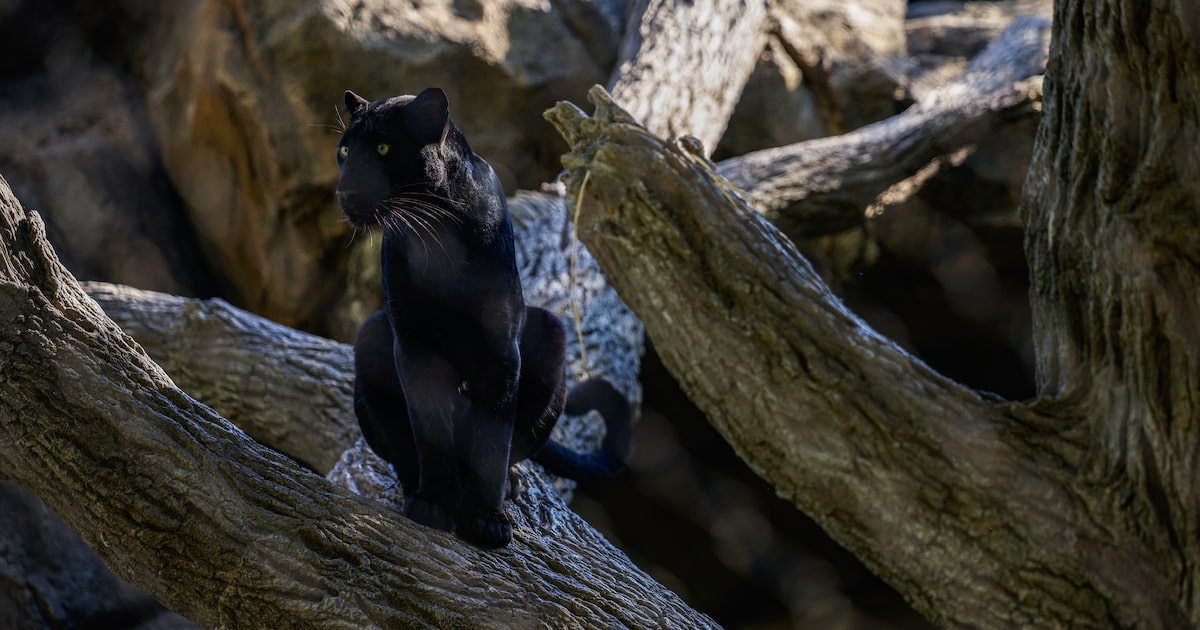One evening while sitting in her countryside driveway, Deborah Burns said she heard a “loud growl,” looked up and saw a large black cat with a long tail.
Burns asked Curious Texas what was the animal in her backyard that evening. She guessed it was a panther.
So this raises the question: Are there black panthers roaming around Texas?
Curious Texas went on a hunt for the answer. Thankfully, for everyone’s sake, experts say the chances of any of us running into the apex predator out in the wild are relatively low. But let’s explore how we got here.
Curious Texas
Panthers 101
A “panther” is a broad term used for many large cats, such as mountain lions, leopards and jaguars. Sam Kieschnick, urban wildlife biologist at Texas Parks and Wildlife, said he as well as other experts, associate the word “panther” with a mountain lion.
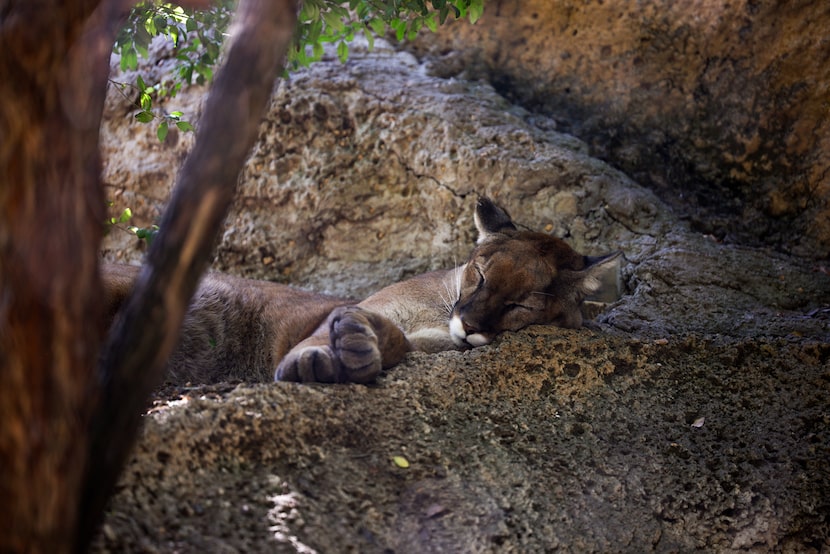
A mountain lion sleeps at the Fort Worth Zoo on Thursday, Oct. 9, 2025, in Fort Worth. The lion came to the zoo in 2014 after being abandoned as a cub.
Christine Vo / Staff Photographer
Mountain lions, said Melissa Blair, mammal keeper at the Fort Worth Zoo, are also called pumas and cougars in addition to panthers. But mountain lions are not black, she said, they have a solid, light brown coat.
“If I had a nickel for every time I’ve been told about a black panther in Dallas-Fort Worth, I would have a pocket full of change,” Kieschnick said. “Simply put, there is no evidence of melanism [increased amount of black or nearly black pigmentation] in mountain lions.”
The black panther that nonexperts are typically referring to is either a jaguar or a leopard, which look very similar.
The difference between a leopard and a jaguar, no matter the color, is their size, where they’re found and a slight contrast in their rosette patterns. Cheetahs look similar, but their coats are just covered in black spots.
According to Big Cat Rescue, jaguars are much stockier than leopards, with shorter legs and a shorter tail, giving them “more of a pit bull type appearance.” As for their pattern, jaguars have spots in the center of their rosettes, which is not the case for leopards.
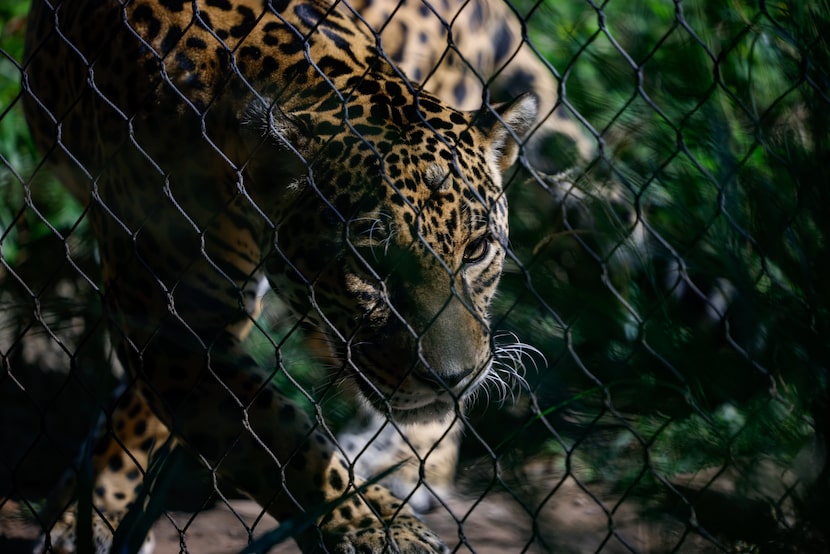
A jaguar named Xochi walks back and forth at the Fort Worth Zoo on Thursday, Oct. 9, 2025, in Fort Worth.
Christine Vo / Staff Photographer
Contrary to common belief, black leopards and jaguars still have the traditional rosette patterns. It’s just not always visible, especially depending on the lighting.
Leopards are found in Africa and Asia, while jaguars are found in the Americas.
Black panthers in Texas?
Jaguars were once found here in Texas. According to Texas Tech’s Natural Science Research Laboratory, records and sightings of jaguars in Texas date from the late 1800s and early 1900s.
The cat was hunted to extinction in Texas in the 1940s. The last confirmed sighting of a jaguar in the state was in 1948, when one was shot about three miles southeast of Kingsville, according to the Natural Science Research Laboratory.
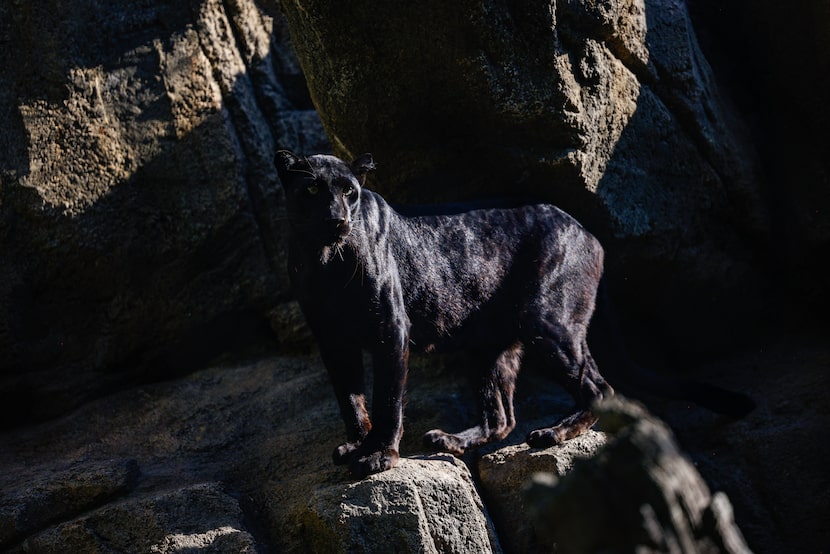
African leopard Carolina stands on rocks at the Fort Worth Zoo on Thursday, Oct. 9, 2025, in Fort Worth.
Christine Vo / Staff Photographer
Consequently, there are no known jaguars, much less melanistic ones, roaming across Texas. The same is true for leopards.
However, the Fort Worth Zoo has a melanistic African leopard in its Predators of Asia & Africa exhibit. Her name is Carolina, and she’s housed there with her brother, Hatch, who has the traditional golden-colored coat.
“Not a lot of zoos have a melanistic leopard, so it’s very unique to be able to showcase this kind of trait,” Blair said. “People always hear about it, but no one ever gets to see one.”
A playful and dynamic duo, Carolina and Hatch are just three years old and they have been at the Fort Worth Zoo since the exhibit opened about two years ago.
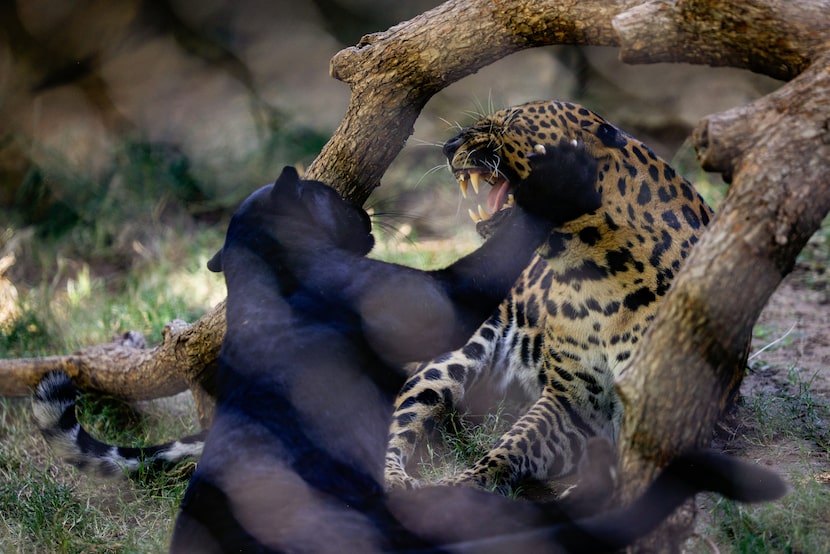
African leopard Carolina claws her brother Hatch at the Fort Worth Zoo on Thursday, Oct. 9, 2025, in Fort Worth. Carolina is a melanistic leopard, also known as black panthers.
Christine Vo / Staff Photographer
Blair said black leopards, like Carolina, are rare. According to Panthera — an international nonprofit organization focused on conservation of wild cat species — the frequency of melanism, in both jaguars and leopards globally, is about 10%.
“[Melanism] is more of a recessive gene [in leopards], so there’s not many out there,” Blair said. “So [Carolina] is more of a rare species — she is a rare gem.”
Blair said Carolina is one of the only melanistic leopards in the state. However, there could be more in captivity, like Shadow, who’s a black leopard that was rescued by In-Sync Exotics Wildlife Rescue & Educational Center in Wylie.
So, what was the animal?
Experts say Deborah likely saw a large black kitty that evening. Or depending on the lighting, it could’ve been a mountain lion, as there have been a few sightings of the cat in North Texas in the last few years.
It is also possible that people own mountain lions, leopards or jaguars as pets, so it’s not unheard of for one to have escaped — but Kieschnick said that is unlikely to happen.
He said if it you happen to encounter a mountain lion in the wild, or any other type of feline predator, make a run for it. Do not interact with the animals.
Experts do recommend you go see these animals in a contained environment, like a zoo or a rescue center, to admire their beauty up close, but safely.
“God there’s so many beautiful and magnificent and wondrous things that exist outside,” Kieschnick said. “Visit some of these places, and look at the size of these big cats, and you’ll see it’s unmistakable. When you see one of these beast, these monsters, these behemoths of a feline … it’s unmistakable.”
Tell us
What do you wonder about the culture, people and institutions of North Texas — and the rest of our great state? Help us investigate stories that matter to you.

